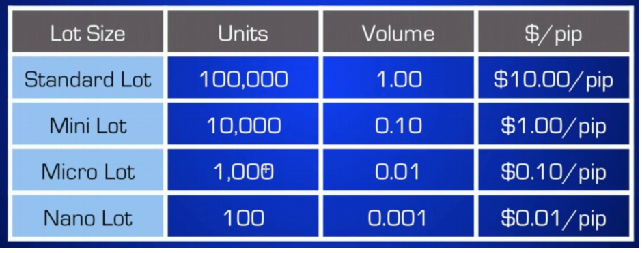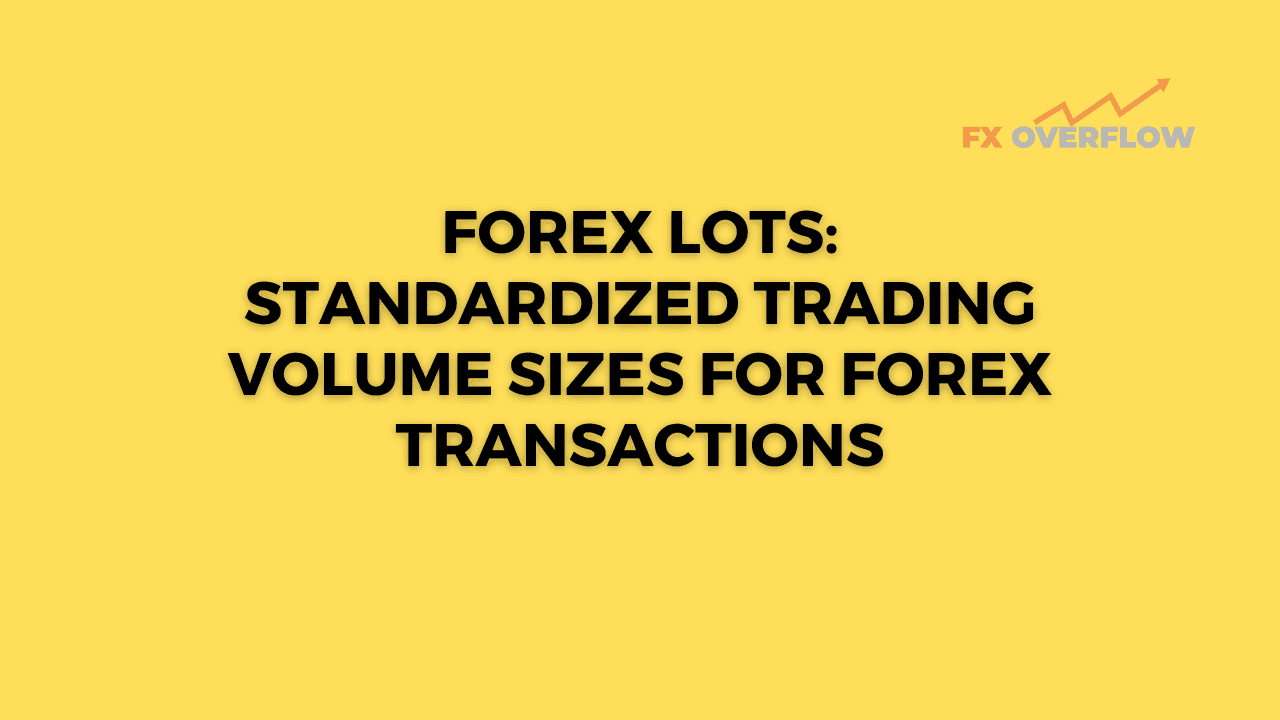Forex Lots: Standardized Trading Volume Sizes for Forex Transactions
Welcome to the ultimate guide on Forex lots - the standardized trading volume sizes for forex transactions. If you're new to the forex market or looking to enhance your trading strategies, understanding how lots work is essential. In this comprehensive article, we'll explore everything from the basics of Forex lots to advanced techniques for optimizing your trading experience.
Whether you're a beginner or an experienced trader, this guide will equip you with the knowledge and tools to navigate the forex market confidently and profitably. So, let's dive right in!
Table Content
1. Forex Lots: Understanding the Basics
2. Leverage and Forex Lots
3. Risk Management in Forex Trading
4. Forex Lots and Position Sizing Strategies
5. Factors Affecting Lot Selection
6. Common Mistakes to Avoid
7. FAQs (Frequently Asked Questions)
8. Footnote
Forex Lots: Understanding the Basics
In the world of forex trading, "lots" refer to standardized trading volume sizes that help control the position size and manage risk. There are three main types of forex lots:

1. Standard Lots:
A standard lot is the most common and typically represents 100,000 units of the base currency. For example, if you're trading EUR/USD, one standard lot would be 100,000 euros.
2. Mini Lots:
A mini lot is one-tenth the size of a standard lot, comprising 10,000 units of the base currency. It is ideal for beginners or those with smaller trading accounts.
3. Micro Lots:
A micro lot is one-tenth the size of a mini lot, consisting of 1,000 units of the base currency. This lot size allows for more precise risk management and is popular among traders with limited capital.
4. Nano Lots:
A micro lot is one-tenth the size of a Micro lot, consisting of 1,00 units of the base currency. This lot is the smallest lot all of the above.
Leverage and Forex Lots
· Understanding Leverage:
Leverage is a powerful tool in forex trading that allows you to control positions larger than your account balance. It is expressed as a ratio, such as 1:100 or 1:500, indicating the amount of leverage provided by the broker.
· Impact of Leverage on Trading Volume:
Leverage magnifies your potential profits, but it also increases the risk of significant losses. A higher leverage ratio means you can control larger positions with smaller margin requirements, but it also exposes you to higher market fluctuations.
· Calculating Lot Size with Leverage:
To determine the appropriate lot size for a trade with a given leverage ratio, you can use the following formula:
Lot Size = (Account Balance * Risk Percentage) / (Stop Loss * Leverage)
Risk Management in Forex Trading
· Importance of Risk Management:
Proper risk management is crucial for long-term success in forex trading. It involves strategies to protect your capital and minimize potential losses.
· Setting Stop-Loss and Take-Profit Levels:
A stop-loss order helps you exit a trade when the market moves against you, limiting your losses. A take-profit order, on the other hand, allows you to secure profits at a predetermined level.
· Diversification of Trades:
Spreading your trades across different currency pairs and using various trading strategies can help diversify your risk and reduce the impact of adverse market movements.
· Avoiding Overtrading:
Overtrading, driven by emotions and impulse, can quickly deplete your trading account. Stick to a well-defined trading plan and avoid making impulsive decisions.
Forex Lots and Position Sizing Strategies
· Fixed Lot Size Strategy:
In this approach, traders use a fixed lot size for each trade, regardless of the account balance or market conditions. It provides a consistent approach to risk management.
· Percentage-Based Lot Size Strategy:
With this strategy, traders risk a fixed percentage of their account balance on each trade. It allows for dynamic position sizing based on account fluctuations.
· Volatility-Based Lot Size Strategy:
This strategy adjusts the lot size based on market volatility. Higher volatility may warrant smaller lot sizes to manage risk effectively.
Factors Affecting Lot Selection
· Account Size:
The size of your trading account directly influences the lot size you can use. Larger accounts can accommodate standard lots, while smaller accounts may prefer mini or micro lots.
· Risk Tolerance:
Your risk tolerance level and comfort with potential losses play a significant role in choosing an appropriate lot size.
· Market Volatility:
Highly volatile markets may require smaller lot sizes to account for increased risk.
· Trading Strategy:
Your trading strategy, such as scalping or swing trading, may influence the lot size you select.
Common Mistakes to Avoid
· Ignoring Risk Management:
Neglecting proper risk management can lead to significant losses and potential account wipeout.
· Chasing Losses:
Trying to recover losses quickly can lead to impulsive decisions and more losses.
· Trading Without a Plan:
A well-defined trading plan helps you stay disciplined and focused on your goals.
· Failing to Adapt:
The forex market is dynamic; failing to adapt to changing market conditions can hinder your success.
FAQs (Frequently Asked Questions)
Q: What is the minimum lot size I can trade?
A: The minimum lot size you can trade depends on your broker and the type of account you have. Some brokers offer micro-lots, allowing you to trade as low as 1,000 units of the base currency.
Q: Can I change my lot size after entering a trade?
A: No, once a trade is executed, the lot size cannot be changed for that specific trade. However, you can adjust the lot size for future trades.
Q: How does lot size impact my profit and loss?
A: The lot size determines the dollar value of each pip movement. Larger lot sizes result in higher profits or losses per pip.
Q: Is it better to use high leverage for bigger profits?
A: While high leverage can amplify profits, it also increases the risk of significant losses. It's essential to strike a balance based on your risk tolerance and trading strategy.
Q: Can I trade multiple lots simultaneously?
A: Yes, you can trade multiple lots at the same time, allowing you to diversify your trades and manage risk more effectively.
Q: Are there different lot sizes for different currency pairs?
A: Lot sizes remain consistent across most currency pairs. However, some exotic pairs may have different lot size conventions.
Footnote:
Understanding forex lots is fundamental for successful trading in the foreign exchange market. By grasping the concept of lot sizes, leveraging, and risk management, you can make informed decisions and maximize your potential for profitable trades.
Remember always to trade responsibly, stick to your trading plan, and continuously educate yourself on market trends and developments. With the right approach and discipline, you can navigate the world of forex trading with confidence and success.











Discussion